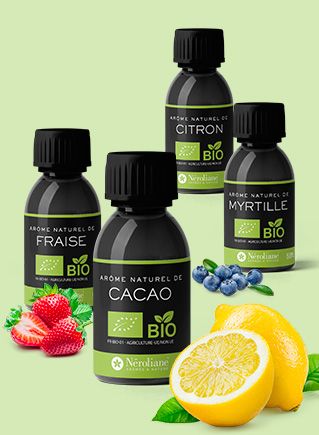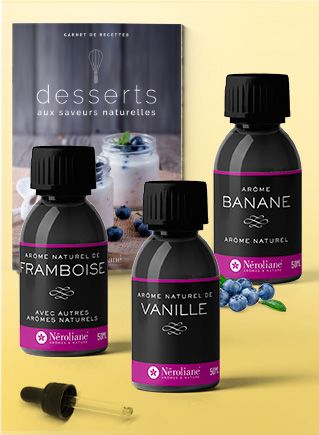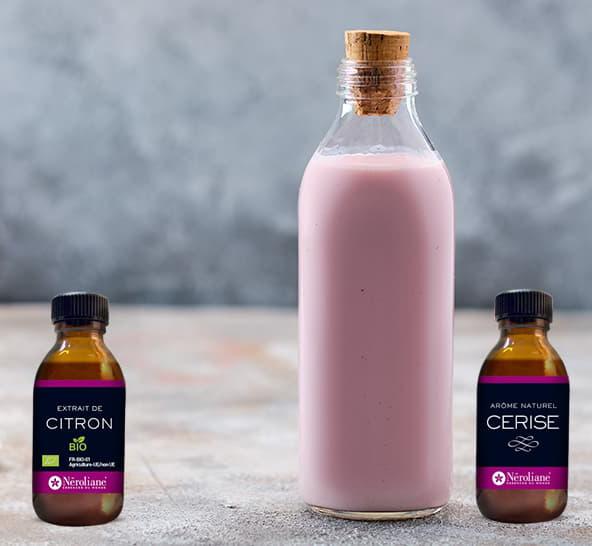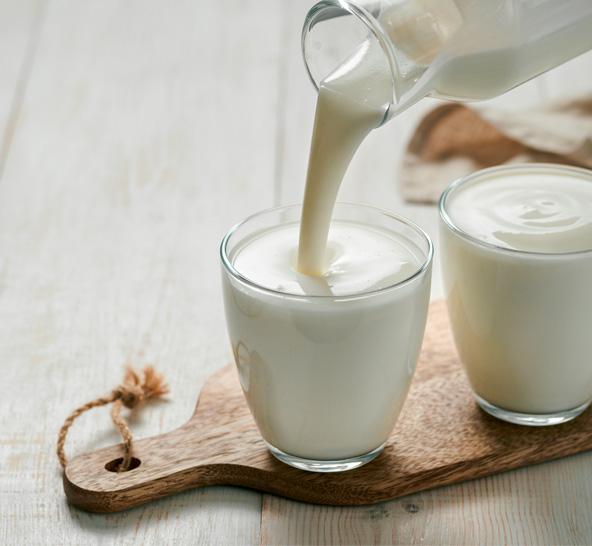Discover the latest natural organic flavours!
I discoverHow can you best make your own flavoured yoghurt?

Are you a professional?
Access exclusive benefits by creating your pro account at Neroliane. Enjoy an immediate 15% discount on all your purchases!
Are you a professional?
Access exclusive benefits by creating your pro account at Neroliane. Enjoy an immediate 15% discount on all your purchases!
Have you dug your yogurt maker out of the attic and want to start making homemade flavoured yogurt? Follow our guide and discover our tips for making delicious dairy desserts!
Economical, environmentally friendly, infinitely variable and quick to prepare... homemade yoghurt (also known as yogurt or yoghurt) has it all! In addition to knowing exactly what you're eating, homemade yoghurt has the advantage of being cheaper than store-bought, requiring very few ingredients - and cooking - and avoiding over-packaging. In your pots, you don't have to use chemical additives, colourings, gelling agents and other preservatives. You can even control the amount of sugar in your yoghurt! With a few tips on how to get started, you should quickly get the hang of it and treat your family and friends to flavoured yoghurt.
Yoghurt: what is it?
According to the decree n°88-1203 of December 30, 1988 "relating to fermented milks and yoghurt", "the name "yoghurt" or "yoghourt" is reserved for fermented milk obtained, according to fair and constant usage by the development of specific thermophilic lactic bacteria known as Lacto-bacillus bulgaricus and Streptococcus thermophilus, which must be sown simultaneously and be present in the finished product at a rate of at least 10 million bacteria per gram in relation to the milk part". Thus, not all fermented milks are yoghurts: to deserve this title, the milk must be heated and then mixed with specific lactic ferments, and remain warm for several hours at the same temperature. It is during this time that the ferments will act, thicken the milk and transform it into yoghurt.
Choosing the right milk
The first step is to choose your milk carefully: the most common yogurts are made from cow's milk, but other milks are just as suitable. Goat's milk, sheep's milk, but also vegan milk made from soya or coconut make delicious yoghurt! If you opt for cow's milk, you have several options, between whole milk, skimmed milk and semi-skimmed milk. All three options are possible, but the final texture will vary depending on which one you choose. Whole milk yoghurts are firmer. To make your yoghurt from raw milk, make sure you boil it well and then cool it down to eliminate potential bacteria (a little sifting will be necessary to remove the skins).
Opt for the right ferment
The second ingredient to choose when making yoghurt is the lactic ferments. There are two schools of thought: those who use a pot of yoghurt from a previous batch or a commercial pot (as fresh as possible), and those who opt for powdered ferments. The latter are readily available in shops, on the Internet or in pharmacies. As far as quantities are concerned, we generally speak of one pot of yoghurt for one litre of milk. Once you have chosen your milk and your ferment, go on to the preparation: to activate the ferments, you need to dilute them in warm milk. Be careful: the temperature should not exceed 45°C. It is best to use a thermometer, but if you don't have one, you should be able to dip your finger in the milk without burning yourself.
Working out the texture
Once the milk-ferment mixture has been made, you can work on the texture of your future yoghurts. If you like thick yoghurt, you can add milk powder or natural thickeners such as chia seeds or psyllium powder, which have an immediate effect. It's up to you to test different methods and quantities to get the ideal texture!
Flavouring your homemade yoghurt
Just before the yoghurt maker comes the most creative part of the preparation of yoghurts: the flavouring. Let your desires speak for themselves with an infinite range of flavours! Infuse the warm milk with vanilla, fresh herbs (mint, etc.), citrus peel (organic and untreated) or even spices. You can also add food flavourings, which you should choose natural and organic if possible. The Nerolian website offers a wide range of flavours, from classic flavours such as lemon or mango to more daring and original flavours - tonka bean or gingerbread, for example. If you like sweet yoghurt, you can add powdered sugar, liquid cane sugar syrup, agave syrup, vergeoise, etc. to your preparation. The possibilities are endless! However, avoid mixing fresh fruit into your yoghurt: prefer to work with jam, placed at the bottom of the pots, or compote... why not also chestnut cream for the greediest! In order not to sour the milk, you should also avoid using fruit juices, especially citrus fruit. You then just have to pour your preparation into glass jars (preferably sterilised), and proceed to fermentation.
Successful fermentation, with or without a yogurt maker
First of all, although a yogurt maker (which often costs less than 50 euros in the shops) will certainly make things easier for you, it is not necessary. If you don't want one, you can prepare your yoghurt in the oven - in a bain-marie - in a pressure cooker or even with the help of a steam cooker. Incubation times differ depending on the model of your yogurt maker, but here are some guidelines that work: at least 8 hours for whole milk yogurt, 10 hours for semi-skimmed milk yogurt and 12 hours for skimmed milk yogurt.
The "fermentation" part without a yogurt maker will only require a little more attention. In the oven, all you need to do is create a bain-marie by filling a drip pan with water and placing the pots on it. Once in the oven, let your pots set for 8 to 12 hours at 40°C to 50°C maximum (you can turn off the oven after a few minutes and leave the yoghurts warm the rest of the time). In a pressure cooker, fermentation is also possible, by heating water at the bottom and then releasing the pressure and placing the yoghurts in the still hot cooker.
Whatever happens, the yoghurts must be cooled and then placed in the fridge for a few hours before eating! If you don't eat them in time, don't hesitate to use your homemade yoghurts in delicious recipes, such as the inevitable yoghurt cake.











